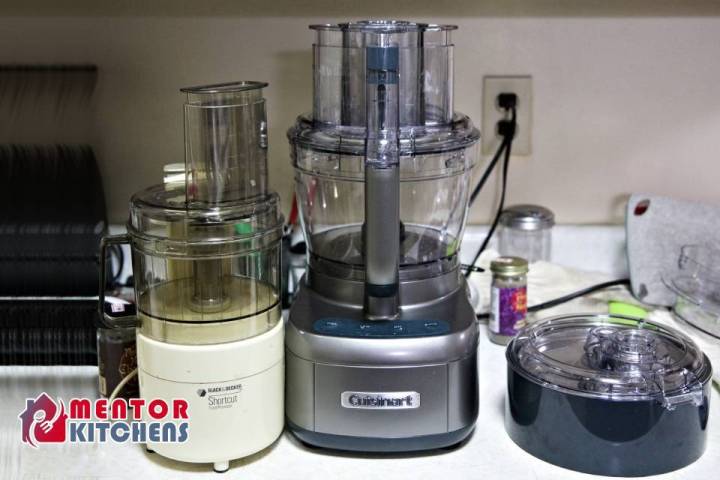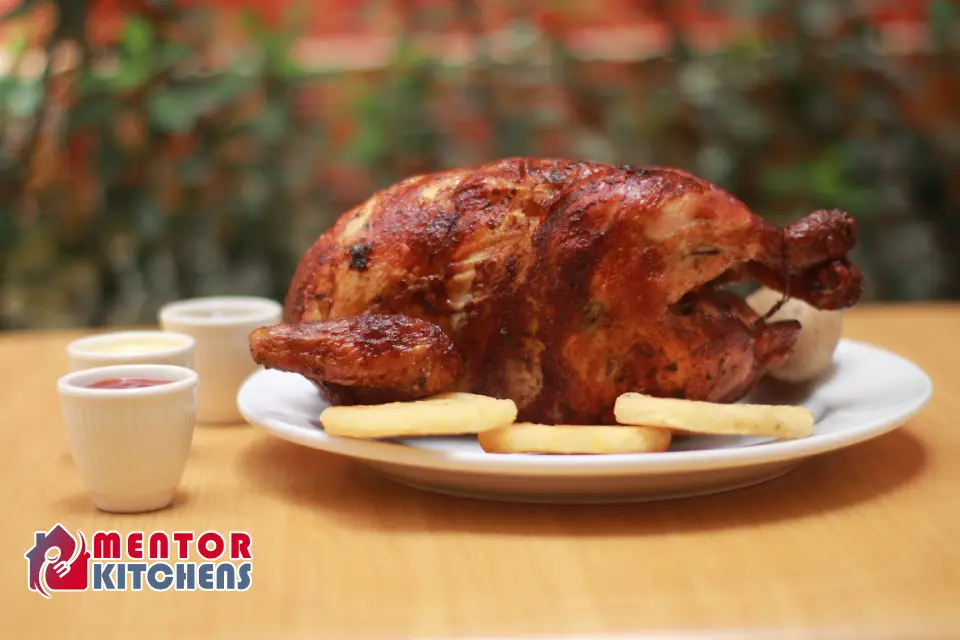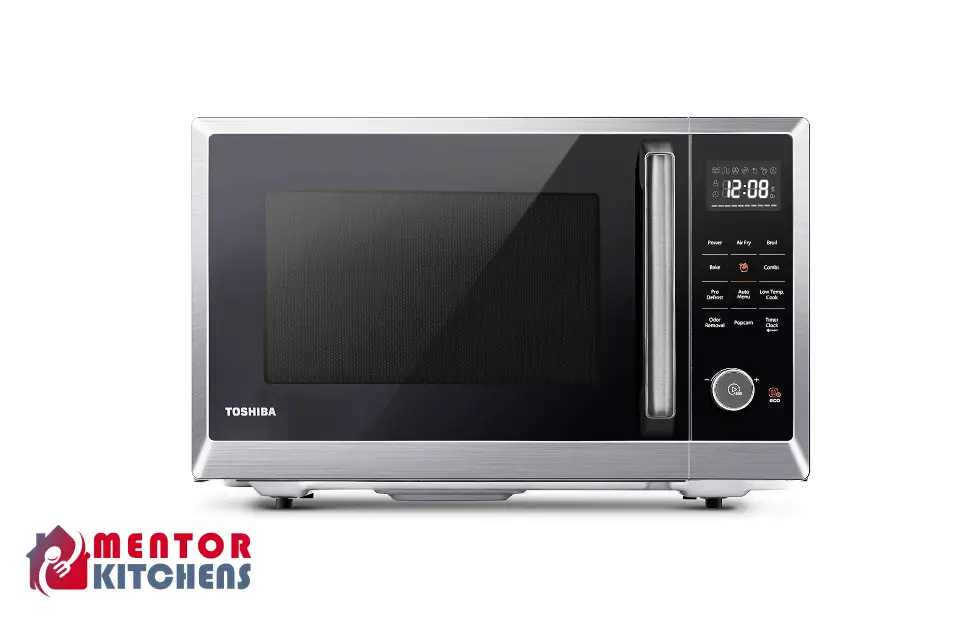A food processor is a handy kitchen appliance that can chop, slice, shred, puree, and mix various ingredients. It can save you time and effort when preparing meals, especially if you need to process large quantities of food. But can you put hot food in a food processor? Is it safe and effective to do so?
The answer is not so simple. It depends on several factors, such as the type of food, the temperature of the food, the size of the food processor, and the manufacturer’s instructions.
In this article, we will explore these factors and give you some tips on how to use a food processor with hot food.

The Type of Food
Some foods are more suitable for processing when they are hot than others. For example, soups, sauces, dips, and purees can be processed when they are hot or warm, as long as they are not boiling or steaming. This can help you achieve a smoother and creamier texture and also prevent the food from sticking to the blades or the bowl.
However, some foods are better processed when they are cold or at room temperature. For example, bread dough, pastry dough, cheese, nuts, and chocolate can become sticky, clumpy, or melted if they are too hot. This can affect the quality and consistency of the final product and also make it harder to clean the food processor.
The Temperature of the Food
The temperature of the food is another important factor to consider when using a food processor with hot food. Generally speaking, you should avoid putting food that is above 60°C (140°F) in a food processor. This is because:
- The heat can damage the plastic parts of the food processor, such as the bowl, the lid, or the pusher. This can cause cracks, warping, or melting of the plastic, which can affect the performance and safety of the appliance.
- The heat can also cause steam to build up inside the food processor, which can create pressure and cause the lid to pop off or leak. This can result in burns or injuries to you or your surroundings.
- The heat can also affect the motor of the food processor, which can overheat and malfunction if it runs for too long with hot food. This can shorten the lifespan of the appliance and cause fire hazards.
Therefore, it is advisable to let the hot food cool down slightly before putting it in a food processor. You can also process it in small batches and pulse it briefly to avoid overheating the motor.
The Size of the Food Processor
The size of the food processor also matters when processing hot food. A larger food processor can handle more volume and heat than a smaller one. This is because:
- A larger food processor has more space for the hot food to expand and circulate inside the bowl. This can prevent pressure buildup and spilling.
- A larger food processor also has a more powerful motor that can cope with thicker and heavier mixtures without straining or overheating.
Therefore, if you need to process a large amount of hot food, you should use a large-capacity food processor that can handle it. Alternatively, you can use a blender or an immersion blender instead of a food processor for hot liquids.
The Manufacturer’s Instructions
Finally, you should always follow the manufacturer’s instructions when using a food processor with hot food. Different models and brands may have different specifications and limitations regarding the maximum temperature and amount of hot food that they can process safely and effectively.
You should read the user manual carefully and check for any warnings or recommendations regarding hot food processing. You should also contact customer service if you have any doubts or questions about your specific appliance.
Which Food Processors Are Best for Handling High Temperatures?
If you want to process hot food in a food processor, you need to find one that is heat-resistant. Some food processors may get damaged or malfunction if they are exposed to high temperatures.
A heat-resistant food processor should have an acrylic bowl and lid, a large and powerful motor, and a design and features that can handle hot food safely and effectively.
One example of a heat-resistant food processor is the Cuisinart 14 Cup Food Processor. This food processor has an acrylic bowl with an extra-large feed tube and a Lexan lid that can withstand hot food up to 60°C (140°F).
It also has a 720-watt motor that can chop, slice, shred, mix, and puree almost anything. It comes with various attachments and blades that are compatible and durable for hot food processing.
Conclusion
In conclusion, you can put hot food in a food processor, but only under certain conditions. You should consider the type of food, the temperature of the food, the size of the food processor, and the manufacturer’s instructions before doing so.
Processing hot food in a food processor can help you create smooth and creamy dishes with ease. However, it can also pose some risks and challenges if done incorrectly. Therefore, you should always use caution and common sense when using a food processor with hot food.
Frequently Asked Questions:
Here are some frequently asked questions about using a food processor with hot food.
Can I Put Boiling Water in a Food Processor?
No, you should not put boiling water in a food processor. Boiling water can damage the plastic parts of the appliance and cause steam pressure to build up inside the bowl. This can result in leaks or explosions that can harm you or your surroundings.
Can I Make Mashed Potatoes in a Food Processor?
Yes, you can make mashed potatoes in a food processor. However, you should not overprocess them or use too much liquid. Otherwise, they can become gluey or gummy instead of fluffy and creamy.
Can I Make Bread Crumbs in a Food Processor?
Yes, you can make bread crumbs in a food processor. However, you should use bread that is cold or at room temperature. If you use bread that is too hot or fresh from the oven, it can become sticky or clumpy instead of crumbly.
Can I Make Whipped Cream in a Food Processor?
No, you should not make whipped cream in a food processor. Whipped cream requires air to be incorporated into it to create a light and fluffy texture. A food processor cannot do this effectively as it has sharp blades that cut through the cream instead of whipping it.
Can I Make Smoothies in a Food Processor?
Yes, you can make smoothies in a food processor. However, you should use frozen fruits instead of fresh ones. Frozen fruits will help create a thicker and colder smoothie without diluting it with ice cubes.




Leave a Reply